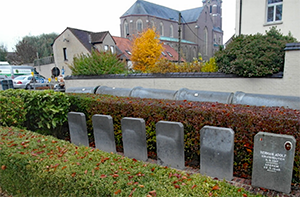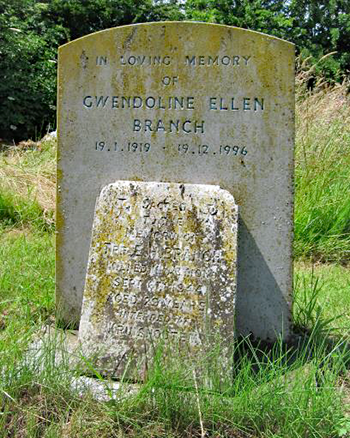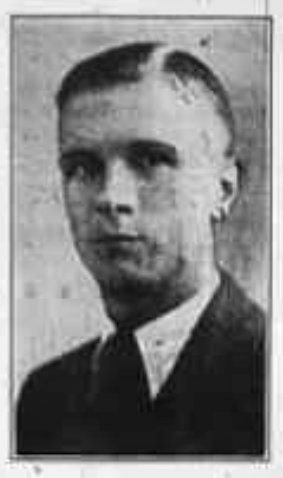Second World War - Lynsted Memorial Project
Ernest Harry BRANCH (of Lynsted)
b. 20th September 1914 Trooper, Service Number 5386529 |

 Born on 20 September 1914, Ernest was the son of Ernest Arthur Branch, who became the licensee of The Lion, Lynsted (now known as The Black Lion), and Ada née Mitchell. Ernest had an older sister, Ivy M.
Born on 20 September 1914, Ernest was the son of Ernest Arthur Branch, who became the licensee of The Lion, Lynsted (now known as The Black Lion), and Ada née Mitchell. Ernest had an older sister, Ivy M.
Ernest's mother, Ada, died in June 1937 and in March 1938 his father married widow and mother of two (Harold and William) Olive Sutton (a Carr by birth).
Ernest married Gwendoline Ellen Rainer in January 1939 and at the time of the 1939 Register census they were living at 52 Ruins Barn Road, Sittingbourne. Ernest was employed as dryer's hand.
They had two children, Robert Ernest George, and Hazel D. They were respectively just 5 and 2 when their father was killed.
Ernest served in the Reconnaissance Corps (known as the Recce Corps) whose units provided the mobile spearhead of infantry divisions. It was formed from Infantry Brigade Reconnaissance Groups on 14 January 1941 and became part of the Royal Armoured Corps in 1944. The Training Centre was established at Winchester in February 1941, until the home of the Corps moved to Catterick in Yorkshire. Although the Corps was raised from various regular army units, it did not follow that all men would be retained. Potential reconnoiterers were required to take an IQ and other tests before being accepted. Many failed and were sent to normal infantry battalions, but those who succeeded enjoyed the kudos of belonging to an elite unit and they were determined to prove their own worth. Before beginning training with his unit, each man undertook a five week course with technical units, which determined his role as a driver, wireless operator or mechanic. Most recce men became efficient in two of these roles e.g. Driver/Operator. During training with a reconnaissance unit, emphasis was placed on both aggressiveness and initiative, as these were the characteristics expected of the men selected for such units, and, as a result, a proud offensive spirit was created, similar to other newly founded units such as The Parachute Regiment. Reconnaissance Regiments were organised into a headquarters squadron (including anti-tank, signals and mortar troops) and three reconnaissance squadrons. Each squadron comprised three scout troops and an assault troop. Scout troops were equipped with Light Reconnaissance Cars (LRCs) such as the Humber Light Reconnaissance Car and with Bren Gun Carriers. The assault troop comprised lorried infantry and were called up when enemy resistance needed to be overcome. Later in the war more efficient and well-armed armoured cars such as the Humber Armoured Car, Daimler Armoured Car, Staghound and Greyhound augmented the LRCs in scout troops.
 Ernest was killed in action on 6 September 1944 and is buried in Kruishoutem Communal Cemetery, Belgium, Grave 3. His grave is one of only 5 commonwealth war graves in the cemetery. The inscription reads:
Ernest was killed in action on 6 September 1944 and is buried in Kruishoutem Communal Cemetery, Belgium, Grave 3. His grave is one of only 5 commonwealth war graves in the cemetery. The inscription reads:
He sleeps in God's beautiful garden
in the sunshine of perfect peace.
Gwendoline did not remarry and died in 1997. A plaque on Gwendoline's grave in Lynsted Churchyard Extension reads:
Sacred to the memory of
Tpr E H Branch Killed in Action
Aged 29 years
The following article is from the Saturday, 10 February 1945 edition of the East Kent Gazette |

 Belgian's Account of Local Man's Death
Belgian's Account of Local Man's Death